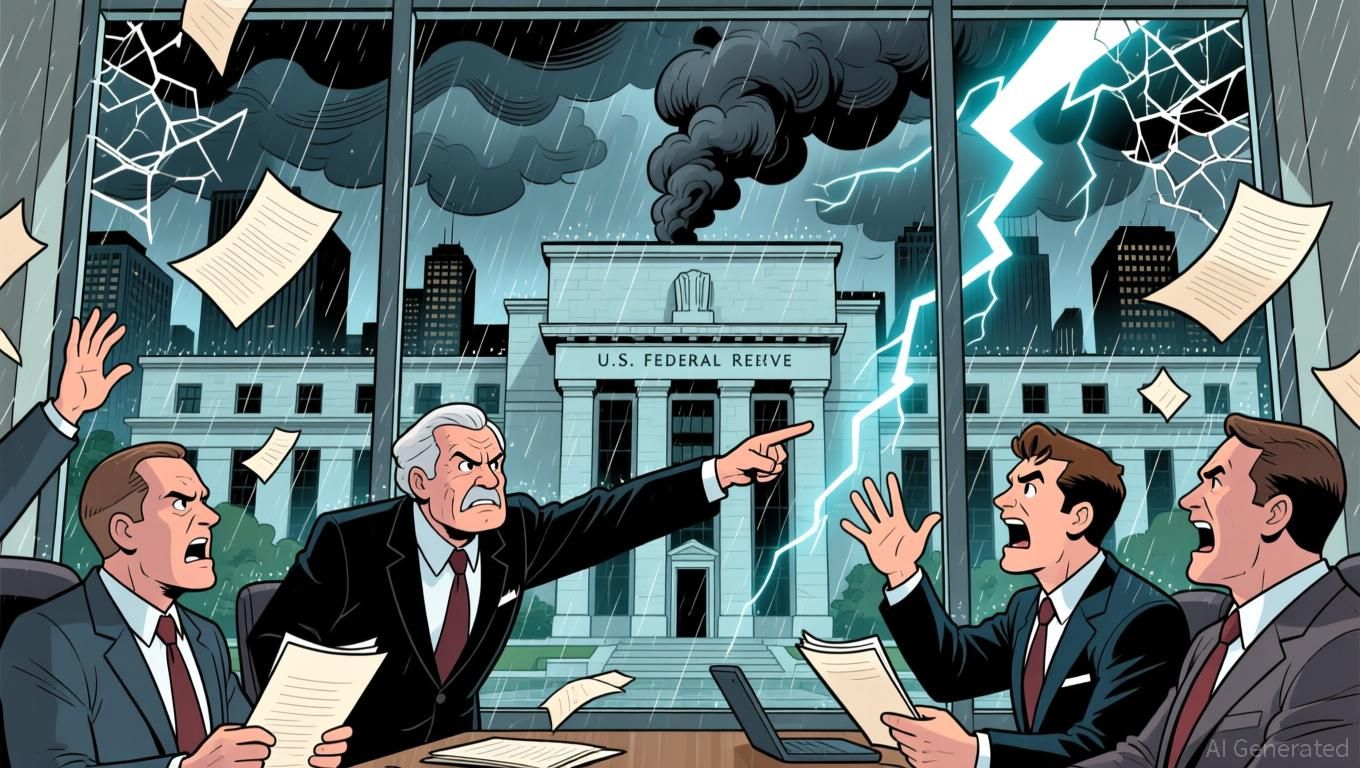Fed's Battle Between Inflation and Jobs Drops Chances of December Rate Cut to 33%
- Fed's December rate cut odds dropped to 33% due to internal divisions and delayed labor market data. - October/November jobs reports delayed until post-Dec 9-10 meeting, removing key policy input. - 10-2 October voting split and cautious officials like Collins highlight policy uncertainty. - Bitcoin fell 20% while gold dipped below $4,000 as markets react to reduced cut expectations. - Analysts warn prolonged indecision risks volatility, with December outcome hinging on incoming data.
The likelihood of the Federal Reserve lowering rates in December has sharply declined to 33%,
The U.S. Bureau of Labor Statistics’ move to delay the October and November employment reports until after the Fed’s December gathering has deprived policymakers of crucial information. The October jobs data was canceled due to a government shutdown, and the November figures won’t be released until December 16, after the FOMC’s meeting on December 9-10. Without these updates, officials lack timely insights into the labor market, a vital component of their mandate to manage both inflation and employment.
Debate within the Fed has added to the uncertainty.

Market movements have reflected the Fed’s indecision.
Gold, often considered a safe haven during market stress, has also come under pressure.
Experts caution that the Fed’s ongoing indecision could extend market turbulence. “The Fed’s challenge in juggling inflation and employment is creating a climate of uncertainty,” one strategist observed, noting that the central bank’s dual objectives are increasingly in conflict.
Looking forward, the outcome of the December meeting will depend on new data and further signals from the Fed. Should officials decide to keep rates unchanged, the “higher-for-longer” scenario may persist, raising borrowing costs for both households and companies. On the other hand, a 25-basis-point cut would mark a cautious shift toward a more supportive policy, potentially lifting stocks and easing strain on the housing market.
As the Fed faces these pivotal decisions, markets are adopting a wait-and-see approach, closely watching the December meeting and the return of key economic indicators.
Disclaimer: The content of this article solely reflects the author's opinion and does not represent the platform in any capacity. This article is not intended to serve as a reference for making investment decisions.
You may also like
The Psychological Factors Influencing Retail Investors’ Actions in Cryptocurrency Markets
- Crypto markets are shaped by behavioral finance, where retail investors drive volatility through FOMO, herd behavior, and overconfidence. - The PENGU token exemplifies this dynamic, surging 480% in July 2025 but plummeting 28.5% by October due to emotional trading cycles. - Social media amplifies emotional contagion, with traders checking prices 14.5 times daily, while financial literacy mitigates bias susceptibility. - Personality traits like neuroticism increase cognitive biases, and speculative narrat

Bitcoin News Today: Bitcoin's Unstable Holiday Periods Hide Average Gains of 6%
- Bitcoin's Thanksgiving-to-Christmas performance shows equal odds of rising or falling, with a 6% average seasonal return despite volatility. - Historical extremes include a 50% 2020 rally and 2022's 3.62% drop post-FTX collapse, amid a $2.49-to-$91,600 long-term surge since 2011. - 2025's $91,600 price reflects ongoing recovery from 2024's $95,531 peak, with institutional crypto adoption and macroeconomic factors shaping future trajectories. - Analysts advise dollar-cost averaging for retail investors, w

Australia Strikes a Balance Between Fostering Crypto Innovation and Safeguarding Investors with Updated Regulations
- Australia introduces 2025 Digital Assets Framework Bill to regulate crypto platforms under ASIC, creating "digital asset platform" and "tokenized custody platform" licenses. - The framework mandates custody standards, transparency requirements, and lighter regulations for small operators (<$5k per customer) to balance innovation with investor protection. - Global alignment with UAE and EU crypto regulations is emphasized, while addressing risks from past failures like FTX through stricter enforcement and

PENGU Token's Latest Price Fluctuations and Blockchain Indicators: An Analytical Perspective on Technical Factors and Institutional Activity
- PENGU token's recent volatility and on-chain activity spark debate over institutional involvement in the crypto market. - Technical indicators show conflicting signals: overbought RSI vs. positive MACD/OBV momentum since November 2025. - Whale accumulation and Solana integration suggest strategic buying, while team wallet outflows highlight market uncertainty. - Social media sentiment drives short-term price swings, but structural risks like tokenomics and regulatory ambiguity persist. - Institutional ad
